http://www.zerohedge.com/news/2013-11-06/fukushima-debris-island-size-texas-near-us-west-coast
Fukushima Debris "Island" The Size Of Texas Near US West Coast
Submitted by Tyler Durden on 11/06/2013 07:59 -0500
Three of the six reactors at Fukushima Daiichi Nuclear Power Station 120 miles north of Tokyo on Honshu's east coast incurred nuclear fuel meltdowns after the2011 Tōhoku Earthquake and Tsunami. One reactor had been defueled for inspection. The station's two other reactors could be shutdown safely.
The four operating reactors at Fukushima Daini Nuclear Power Station seven miles away could also be saved.
The meltdowns at Daiichi led to powerful hydrogen explosions, releasing amounts of radioactive material over land and sea only rivaled by the 1986 Chernobyl reactor disaster in the Ukraine. The government imposed an exclusion zone around the stricken station, because radiation doses were deemed too high for habitation. To date, roughly 70,000 former residents cannot return home permanently. According to Shigeru Sato, Tsuyoshi Inajima, Monami Yui and Emi Urabe's report with the title "Japan Mulls Plan for One Operator to Run All Reactors: Energy" published by Bloomberg Oct. 22, 2013, cleanup and compensation are currently projected to cost 112 billion dollars, roughly equaling the cost for two Hurricane Sandies.
A multitude of inquiries have attempted to uncover the causes underlying the Fukushima accident. The operator of both power stations, Tokyo Electric Power Company, tells us what happened in its accident reports. The company's fact compilation points to one essential lynchpin: the residual heat removal system must not fail.
The reactors at Daiichi and Daini are boiling water reactors with General Electric's Mark I or Mark II primary containment systems.
The Mark I containments consist of a pear-shaped drywell housing the reactor pressure vessel and a doughnut-shaped wetwell, also known as torus or pressure suppression chamber, holding a large pool of water. The drywell is connected at the bottom to the wetwell with equally spaced radial vent pipes.
The Mark II containments are shaped differently, but still consist of a drywell with the reactor vessel and a wetwell with a pressure suppression pool.
When nuclear reactors need shutdown in an emergency, control and safety rods are inserted between the fuel rods in milliseconds, disrupting the nuclear chain reaction. Furthermore, the reactor pressure vessel's main steam lines may be isolated from the power-generating turbine and main condenser when potential damage to the pipes is anticipated. Without heat transfer, decay heat builds in the reactor pressure vessel, revving up pressure. Water must be injected into the vessel as coolant and to keep the fuel covered to prevent a meltdown.
Though emergency pumps can inject water into the vessel at high pressure, the pressure must be relieved to prevent damage to the vessel and to facilitate greater coolant injection. Safety relief valves are periodically opened to depressurize the vessel. The valves discharge high-pressure steam into the wetwell's pool, in which the steam is condensed and the pressure is absorbed. If the vessel was breached and high pressure steam bursted into the drywell, the pressure would be relieved into the suppression pool through the pipes that directly connect the drywell to the wetwell.
At Fukushima Daiichi Nuclear Power Station, the quake vibrations tripped the operating reactors automatically. Control and safety rods were inserted and the pressure vessels were isolated. Access to outside power was lost because of quake damage. Emergency diesel generators started up to provide power.
About 40 minutes later, tsunami waves flooded power distribution panels and emergency generators located low in the reactor turbine buildings. Battery banks continued to power emergency core cooling systems. Except for Unit 1 which is equipped with a isolation condenser, two reactor steam-driven pumps, the reactor core isolation cooling system and the high pressure coolant injection system, were available to inject water into the reactor pressure vessels, initially from storage tanks and later from the wetwell pools, while the operators attempted to depressurize the reactors, relieving steam into the pools.
However, once the pool temperature exceeds 100 °C, absorption of reactor pressure becomes progressively less effective. The steam-driven pumps sucking water from the pool stop working above that temperature. Therefore, removing heat from the wetwell pool is absolutely necessary.
The residual heat removal system fulfills this function. It consists of electric motor-driven pumps that flush cold service water from a large body of water, known as ultimate heat sink, through heat exchangers, cooling the wetwell pool. In Fukushima, the ocean is the ultimate heat sink, and the seawater pumps of the residual heat removal system were built near the water’s edge 4 meters above sea level.
At Daiichi the pumps stood exposed on the dock and the tsunami rendered them irreparable, except one that could be re-powered and jury-rigged to supply units 5 and 6.
By contrast, at Daini the pumps were housed in buildings that can be seen dockside in the areal view above. The structures were not flood resistant, but withstood the brunt of the debris-laden waves. The pump for unit 3 persevered without loss of function, and the others could be repaired before the reactor fuel was uncovered. All reactors at both power stations with functioning residual heat removal systems could be shutdown safely within days.
Therefore, electric power must be available and the residual heat removal system must remain operable for nuclear reactors of the Fukushima type to successfully complete an emergency shutdown. These conditions impose a major constraint on accident recovery, representing a fundamental weakness of the reactor design. The residual heat removal system must remain operable under the conditions of flooding and station blackout.
Thirty reactors of this type currently operate in the United States. A number are sited in flood-prone areas. A moratorium should be imposed on these reactors, until the operators can ascertain that service water pumps are protected against inundation, debris, and loss of power.
While it took Japan over two years to admit the Fukushima situation on the ground is "out of control", a development many had predicted for years, a just as important topic is what are the implications of this uncontrolled radioactive disaster on not only the local environment and society but also globally, particularly Japan's neighbor across the Pacific - the US.
To be sure, there has been much speculation, much of it unjustified, in the past two years debating when, how substantial and how acute any potential debris from Fukushima would be on the US. Which is why it was somewhat surprising to see the NOAA come out with its own modeling effort, which shows that not only "some buoyant items first reached the Pacific Northwest coast during winter 2011-2012" but to openly confirm that a debris field weighing over 1 million tons, and larger than Texas is now on the verge of hitting the American coastline, just west off the state of California.
Obviously, the NOAA in releasing such a stunner could well be hammered by the administration for "inciting panic" which is why it caveated its disclosure carefully:
Many variables affect where the debris will go and when. Items will sink, disperse, and break up along the way, and winds and ocean currents constantly change,making it very difficult to predict an exact date and location for the debris’ arrival on our shores.The model gives NOAA an understanding of where debris from the tsunami may be located today, because it incorporates how winds and ocean currents since the event may have moved items through the Pacific Ocean. This model is a snapshot of where debris may be now, but it does not predict when debris will reach U.S. shores in the future. It's a "hindcast," rather than a "forecast." The model also takes into account the fact that winds can move different types of debris at different speeds. For example, wind may push an upright boat (large portion above water) faster than a piece of lumber (floating mostly at and below the surface).
Still despite this "indemnity" the NOAA does come stunningly close with an estimate of both the location and size of the debris field. One look at the map below shows clearly why, while the Fed may have the economy and markets grasped firmly in its central-planning fist, when it comes to the environment it may be time to panic:
Source: NOAA
Some of the disclosures surrounding the map:
- Japan Ministry of the Environment estimates that 5 million tons of debris washed into the ocean.
- They further estimated that 70% of that debris sank near the coast of Japan soon after the event.
- Model Results: High windage items may have reached the Pacific Northwest coast as early as winter 2011-2012.
- Majority of modeled particles are still dispersed north and east of the Hawaiian Archipelago.
- NOAA expects widely scattered debris may show up intermittently along shorelines for a long period of time, over the next year, or longer.
In light of these "revelations" which come not from some tinfoil website but the Department of Commerce's National Oceanic and Atmospheric Administration, it becomes clear why there has been virtually zero mention of any of these debris traffic patterns on the mainstream media in recent history, or ever.
Appropriately enough, since the US media will not breach this topic with a radioactive 10 foot pole, one has to go to the Russian RT.comwebsite to learn some more:
Over a million tons of Fukushima debris could be just 1,700 miles off the American coast, floating between Hawaii and California, according to research by a US government agency.The National Oceanic and Atmospheric Administration (NOAA) recently updated its report on the movement of the Japanese debris, generated by the March 2011 tsunami, which killed 16,000 people and led to the Fukushima nuclear power plant meltdown.Seventy percent of an estimated 5 million tons of debris sank near the coast of Japan, according to the Ministry of Environment. The rest presumably floated out into the Pacific.While there are no accurate estimates as to where the post-tsunami junk has traveled so far, the NOAA has come up with a computer model of the debris movement, which gives an idea of where its highest concentration could be found.
Having released the radioactive genie from the bottle, the NOAA is now doing all it can to avoid the inevitable social response. RT has more:
The agency was forced to alleviate the concerns in an article saying there was “no solid mass of debris from Japan heading to the United States.”“At this point, nearly three years after the earthquake and tsunami struck Japan, whatever debris remains floating is very spread out. It is spread out so much that you could fly a plane over the Pacific Ocean and not see any debris since it is spread over a huge area, and most of the debris is small, hard-to-see objects,” NOAA explains on its official webpage.The agency has stressed its research is just computer simulation, adding that “observations of the area with satellites have not shown any debris.”Scientists are particularly interested in the organisms that could be living on objects from Japan reaching the west coast."At first we were only thinking about objects like the floating docks, but now we’re finding that all kinds of Japanese organisms are growing on the debris," John Chapman of the Marine Science Center at Oregon State University told Fox News."We've found over 165 non-native species so far," he continued. "One type of insect, and almost all the others are marine organisms … we found the European blue mussel, which was introduced to Asia long ago, and then it grew on a lot of these things that are coming across the Pacific ... we’d never seen it here, and we don’t particularly want it here."
What is the worst-case scenario:
The worst-case scenario would be that the trash is housing invasive organisms that could disrupt the local environment’s current balance of life. Such was the case in Guam, where earlier this year it was announced that the US government intended to parachute dead mice laced with sedatives on to the island in order to deal with an invasive species of brown tree snake that was believed to have been brought to the American territory on a military ship over 60 years ago. In a little over half a century, a few snakes spawned what became an estimated 2 million animals, the likes of which ravaged the island’s native bird population and warranted government intervention.Other concerns such as radiation, meanwhile, have been downplayed. On its website, the NOAA says, “Radiation experts agree that it is highly unlikely that any tsunami-generated marine debris will hold harmful levels of radiation from the Fukushima nuclear emergency.”Independent groups like the 5 Gyres Institute, which tracks pollution at sea, have echoed the NOAA’s findings, saying that radiation readings have been “inconsequential.” Even the release of radioactive water from the Fukushima nuclear reactor shouldn't be a grave concern, since scientists say it will be diluted to the point of being harmless by the time it reaches American shores in 2014.
Which is great news: since even the worst case scenario is inconsequential, we expect the broader media will promptly report on the NOAA's findings: after all, the general public surely has nothing to fear.
Energy News ......
CBC Headline: Radiation from Fukushima arrives on Alaska coast — University scientists concerned — “Is the food supply safe?… I don’t think anyone can really answer that”
NBC News: “Grisly disease decimating starfish populations… from Orange County to Alaska” — Scientists: Alarm as they began eating each other, then melting away — Similar problem on East Coast observed since 2011 — Now spreading at “scary” rate (VIDEO)
Applying the lesson of Fukushima to the US - what have we done to prevent a Fukushima here ? Has the fatal flaw at Fukushima been adressed here in the US ?
http://brainmindinstrev.blogspot.com/2013/11/why-fukushimas-reactors-failed.html
Monday, November 4, 2013
Why Fukushima's Reactors Failed
Bird's eye view of Fukushima Daiichi Nuclear Power Station before the earthquake and tsunami on Fri. Mar. 11, 2011. Units 1 (right) to 4 (left) are seen in the foreground and 5 (left) and 6 (right) further back. Units 1, 2 and 3 incurred fuel meltdowns (source: TEPCO).
Three of the six reactors at Fukushima Daiichi Nuclear Power Station 120 miles north of Tokyo on Honshu's east coast incurred nuclear fuel meltdowns after the2011 Tōhoku Earthquake and Tsunami. One reactor had been defueled for inspection. The station's two other reactors could be shutdown safely.
Bird's eye view of Fukushima Daini Nuclear Power Station before the earthquake and tsunami on Fri. Mar. 11, 2011 (unit 1 is on the right). All units could be safely shutdown. (source: TEPCO).
The four operating reactors at Fukushima Daini Nuclear Power Station seven miles away could also be saved.
The meltdowns at Daiichi led to powerful hydrogen explosions, releasing amounts of radioactive material over land and sea only rivaled by the 1986 Chernobyl reactor disaster in the Ukraine. The government imposed an exclusion zone around the stricken station, because radiation doses were deemed too high for habitation. To date, roughly 70,000 former residents cannot return home permanently. According to Shigeru Sato, Tsuyoshi Inajima, Monami Yui and Emi Urabe's report with the title "Japan Mulls Plan for One Operator to Run All Reactors: Energy" published by Bloomberg Oct. 22, 2013, cleanup and compensation are currently projected to cost 112 billion dollars, roughly equaling the cost for two Hurricane Sandies.
A multitude of inquiries have attempted to uncover the causes underlying the Fukushima accident. The operator of both power stations, Tokyo Electric Power Company, tells us what happened in its accident reports. The company's fact compilation points to one essential lynchpin: the residual heat removal system must not fail.
The reactors at Daiichi and Daini are boiling water reactors with General Electric's Mark I or Mark II primary containment systems.
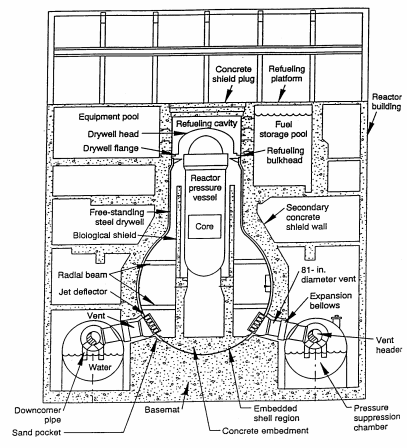 |
| Schematic of a boiling water reactor with a Mark I containment(source: IAEA). |
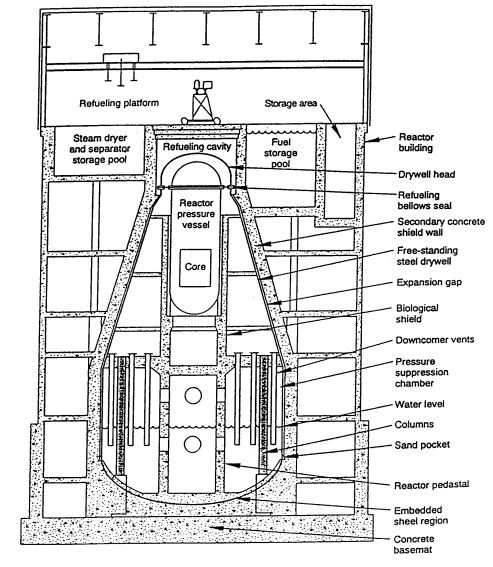 |
| Schematic of a boiling water reactor with a Mark II containment(source: IAEA). |
When nuclear reactors need shutdown in an emergency, control and safety rods are inserted between the fuel rods in milliseconds, disrupting the nuclear chain reaction. Furthermore, the reactor pressure vessel's main steam lines may be isolated from the power-generating turbine and main condenser when potential damage to the pipes is anticipated. Without heat transfer, decay heat builds in the reactor pressure vessel, revving up pressure. Water must be injected into the vessel as coolant and to keep the fuel covered to prevent a meltdown.
Though emergency pumps can inject water into the vessel at high pressure, the pressure must be relieved to prevent damage to the vessel and to facilitate greater coolant injection. Safety relief valves are periodically opened to depressurize the vessel. The valves discharge high-pressure steam into the wetwell's pool, in which the steam is condensed and the pressure is absorbed. If the vessel was breached and high pressure steam bursted into the drywell, the pressure would be relieved into the suppression pool through the pipes that directly connect the drywell to the wetwell.
At Fukushima Daiichi Nuclear Power Station, the quake vibrations tripped the operating reactors automatically. Control and safety rods were inserted and the pressure vessels were isolated. Access to outside power was lost because of quake damage. Emergency diesel generators started up to provide power.
About 40 minutes later, tsunami waves flooded power distribution panels and emergency generators located low in the reactor turbine buildings. Battery banks continued to power emergency core cooling systems. Except for Unit 1 which is equipped with a isolation condenser, two reactor steam-driven pumps, the reactor core isolation cooling system and the high pressure coolant injection system, were available to inject water into the reactor pressure vessels, initially from storage tanks and later from the wetwell pools, while the operators attempted to depressurize the reactors, relieving steam into the pools.
- Eyewitness account of a Daiichi operator:
“We went into the field in order to open the vent valves. When we were at the near the torus (that is, the wetwell, ed.) room, we heard a large, weird popping sound. The valve is at up high, so I put my foot on the torus to lift myself up. Then, my black rubber boot was melted like butter [source: TEPCO interim report, Dec 2, 2011, page 53].”- "The decomposition of the rubber-sulphur compound (that is, vulcanized rubber, ed.) takes place to an appreciable extent at the usual temperatures of vulcanization [source: Bureau of Standards Journal of Research, Volume 4 (1930), page 512]."
- "A typical vulcanization temperature for a passenger tire is 10 minutes at 170 °C[source: Vulcanization]."
However, once the pool temperature exceeds 100 °C, absorption of reactor pressure becomes progressively less effective. The steam-driven pumps sucking water from the pool stop working above that temperature. Therefore, removing heat from the wetwell pool is absolutely necessary.
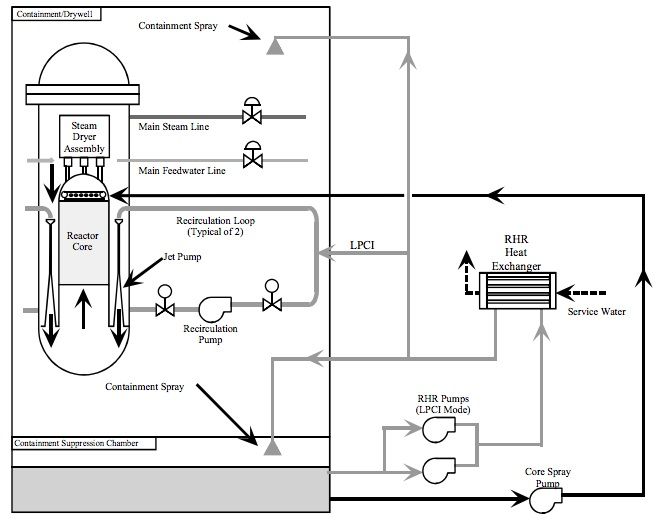 |
| Schematic showing the residual heat removal system on the right (source: NRC). |
 |
| Exposed seawater pumps at Fukushima Daiichi Nuclear Power Station 2011 (source: Daisuke Tsuda). |
By contrast, at Daini the pumps were housed in buildings that can be seen dockside in the areal view above. The structures were not flood resistant, but withstood the brunt of the debris-laden waves. The pump for unit 3 persevered without loss of function, and the others could be repaired before the reactor fuel was uncovered. All reactors at both power stations with functioning residual heat removal systems could be shutdown safely within days.
Therefore, electric power must be available and the residual heat removal system must remain operable for nuclear reactors of the Fukushima type to successfully complete an emergency shutdown. These conditions impose a major constraint on accident recovery, representing a fundamental weakness of the reactor design. The residual heat removal system must remain operable under the conditions of flooding and station blackout.
Thirty reactors of this type currently operate in the United States. A number are sited in flood-prone areas. A moratorium should be imposed on these reactors, until the operators can ascertain that service water pumps are protected against inundation, debris, and loss of power.




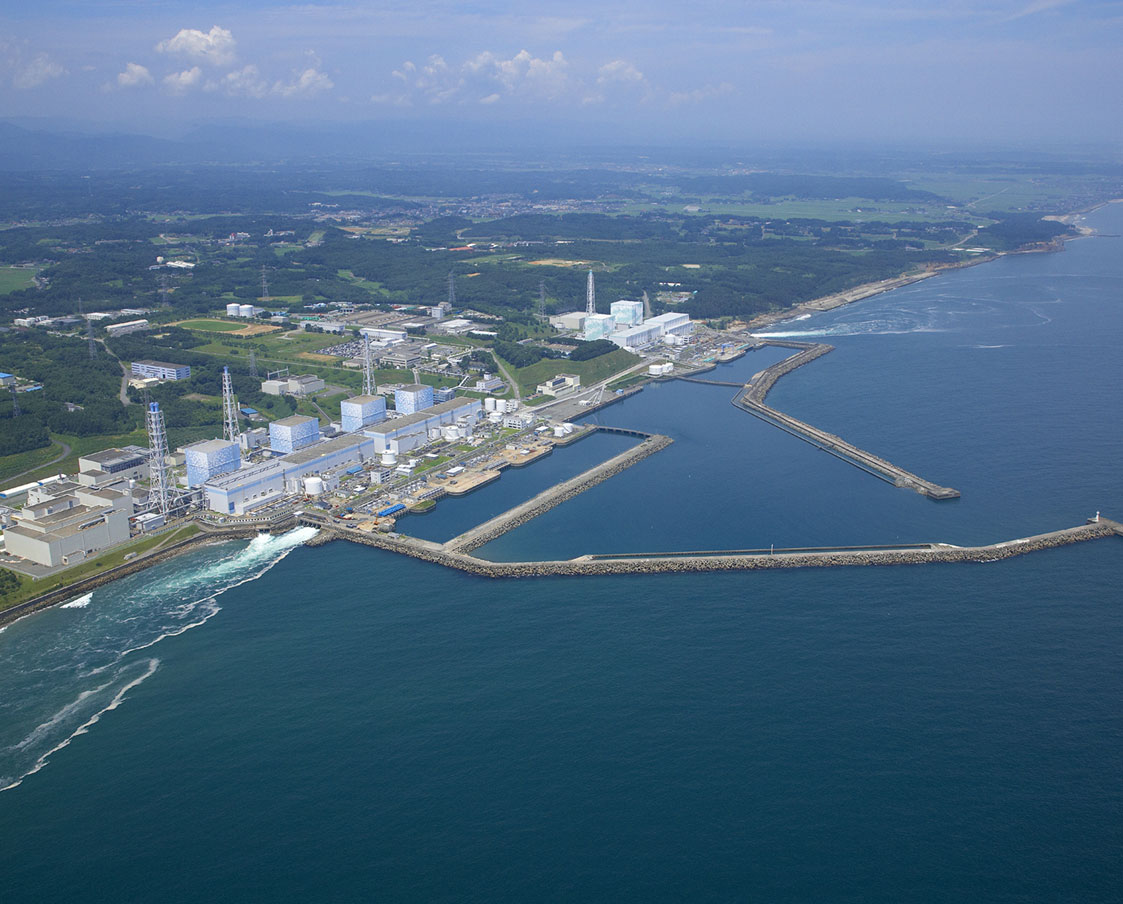
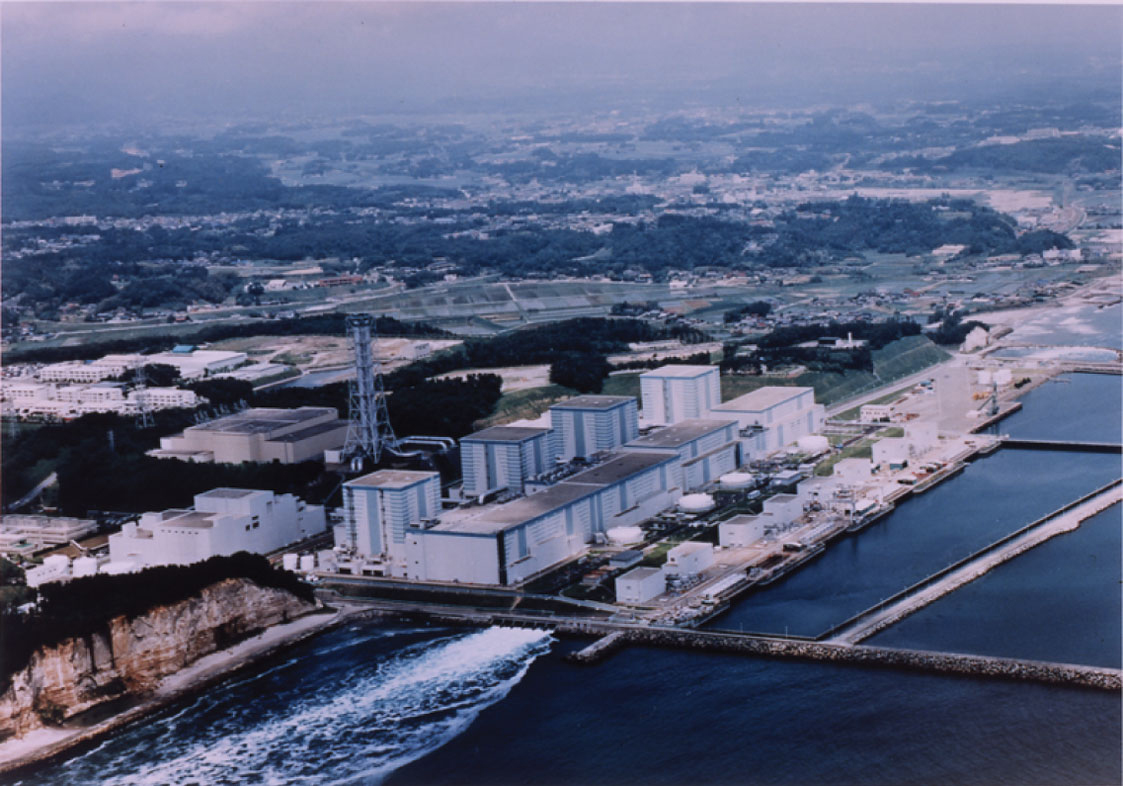
No comments:
Post a Comment